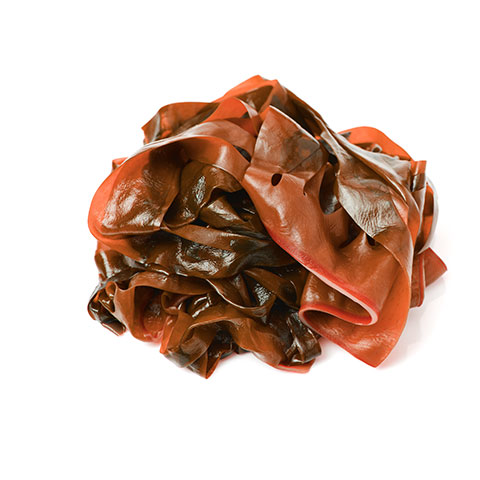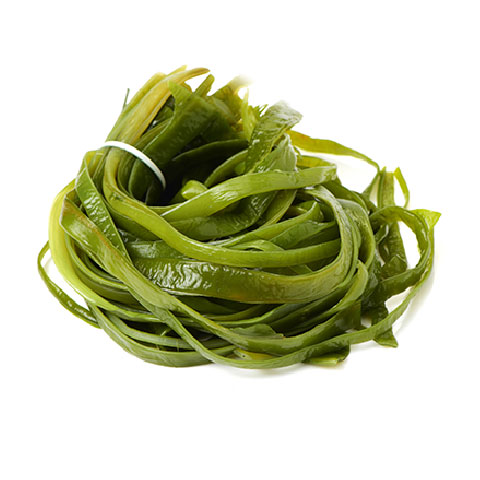
Currently, research shows that they are also very beneficial for our skin and our internal element.
Algae have the ability to absorb and concentrate elements such as vitamins, minerals, trace elements, amino acids, proteins and other important nutrients, which are significant for the health of our body.
This is something that has been known for many centuries, making use of algae in food and medicine (Bourgougnon, Bedoux, Sangiardi and Stiger, 2011).
Of the 25,000 species that exist on our planet, only about 20 of them are used in aesthetic treatments, being able to assume a double role in cosmetic formulation (Hunt, Fate and Dods, 2011; Bedoux, Hardouin, Burlot and Bourgougnon, 2015 ):
- Using the polysaccharides of its cell wall (for example, agar-agar, alginates and carrageenans), which serve as gelling and texturizing agents of the formulation.
- Using the extracts of these algae as active agents of the formula, depending on the actions that we want from them:
• Purifying: they stimulate lymphatic circulation and favor the elimination of toxins.
• Toning: due to its mineral contribution and its ability to stimulate fibroblasts, it increases the elasticity and tone of the skin, increasing its firmness.
• Anti-cellulite and reducing: due to its draining power and its high iodine content (contraindicated in people with thyroid problems).
• Emollient: due to its content in gelatinous substances that soften and prevent the loss of water from the epidermis. And finally,
• Nutritious: they are very rich in carbohydrates, minerals, vitamins and amino acids.
In addition, different types of algae are used in beauty centers depending on what is to be treated (Cheong, Qiu, Du, Liu and Khan, 2018).
So much so, that the recommendations of the experts in body care with algae indicate that the benefits of algae with respect to body care are determined by its own color.
Based on this, different classifications have been established associated with the properties that algae provide, depending on their color. Let’s see.
PROPERTIES OF ALGAE ACCORDING TO THEIR COLOR
Red algae
They are algae of small size, very numerous, and with very good properties, as they are very suitable for the treatment of the legs and the rest of the extremities, they avoid swelling and are in high demand for their vasoconstrictive properties. In addition, they are recommended for:
- Restructure the upper layers of the epidermis
- Restore the protective function of the skin
- Regenerate reactive and injured skin
- Promote the elimination of acne, eczema, redness, dermatitis, etc.
- Treat problems like cellulite
- Eliminate toxins from the whole body
Green algae
These are the ones we always imagine when we think of algae. 90% of Green Algae are freshwater, although they are also found in salty waters, and they are tremendously important, because with them plankton is created. Although they are not as interesting in the cosmetic world as brown algae and red algae, we can highlight that:

- They are rich in vitamins
- They are very valid to relax
- Excellent moisturizers
- Used to condition and protect the epidermis
- They serve to decongest and reduce inflammation of the skin
- They have important regenerative properties
The blue-green algae
This type of seaweed is the most interesting in the cosmetic field, since its high protein content makes it ideal for beauty treatments. In general, it can be highlighted:
- They have a powerful anti-wrinkle character
- Produce anti-free radical substances
- They are characterized by their great moisturizing and nourishing function
- They have a high concentration of proteins
- In its composition, there are vitamins A, B, C and E.
Brown or brown algae
They are the largest algae and the most common lals in cold climates. The scientific names of the most commonly used brown algae are Alaria esculenta, Fucus vesiculosus or Laminaria digitata. At the body level, we can highlight the following virtues:
- They are widely used in cosmetics and very nutritious for the skin, being rich in iodine, minerals, trace elements and vitamins.
- They are very moisturizing and help prevent cellulite.
- Very rich in Chlorophyll, Mucilage and Alginate, which makes them extremely recommended for use in cosmetics, given their benefits for the epidermis.
PARTICULARITIES OF ALGAE
Because the first living cells were created in an ocean universe, there is a unique affinity in cosmetology between our cells and marine active ingredients (Amit, Ashawat, Shailendra, & Swarnlata, 2007).
This similarity ensures an optimal diffusion, in the heart of the skin, of the active ingredients derived from algae and also an excellent tolerance. Our cells recognize some molecules from algae more easily than others from land plants. Its bio-affinity is therefore very powerful, and in other words, marine cosmetics guarantee excellent assimilation by the skin and, therefore, greater efficacy.
Algae also have the peculiarity of suffering stresses similar to those suffered by the skin, in proportions that are often much greater (Alcalde, 2008; Gonzalez-Minero and Bravo Díaz, 2018):
- regular dehydration (tides)
- radiation attack (UV rays from the sun)
- thermal stress (air / water),
- oxidation, bacterial attacks (wetlands)
- seasonal variations, and
- impacts on rocks (healing)
To survive in an environment that is often hostile, they develop highly sophisticated resistance systems that, once well understood, can be replicated to rescue skin.
The sea then becomes an inexhaustible field of exploration for researchers, not only to find new resources, but above all to discover new defense mechanisms.
References
Mayor, M.T. (2008). Natural and ecological cosmetics. OFFARM, 27 (9), 96-102.Amit, G., Ashawat, MS., Shailendra, S. and Swarnlata, S. (2007). Phytosome: A novel Approach Towards Functional Cosmetics. J Plan Sci., 2 (6), 644-649.
Bedoux, A., Hardouin, K., Burlot, A.S. and Bourgougnon, N. (2015). Bioactive components from seaweeds: Cosmetic applications and future development. Adv Botan Res. 71 (1), 345-378.
Bourgougnon, N., Bedoux, G., Sangiardi, H. and Stiger, V. (2011). Algae: nutritional potential and cosmetic applications. In CETMAR Foundation (Ed.), Algae as a resource. Valorization. Industrial applications and trends. pp. 79-84. Vigo: Technological Center of the Sea of Galicia.Cheong, KL., Qiu, HM., Du, H., Liu, Y. and Khan, B. (2018). Oligosaccharides Derived from Red Seaweed: Production, Properties, and Potential Health and Cosmetic Applications. Molecules, 23 (10), pii: E2451. DOI: 10.3390 / molecules23102451.
Gonzalez-Minero, F.J. and Bravo Díaz, L. (2018). Botanical and pharmaceutical study of products with application in cosmetics and skin care. Ars Pharmaceutica, 58 (4), 175-191. DOI: 10.4321 / S2340-98942017000400005.
Hunt, K.A., Fate, J. and Dods, B. (2011). Cultural and social influences on the perception of beauty: a case analysis of the cosmetics industry. J Business Case Studies, 7 (1), 1-10.



